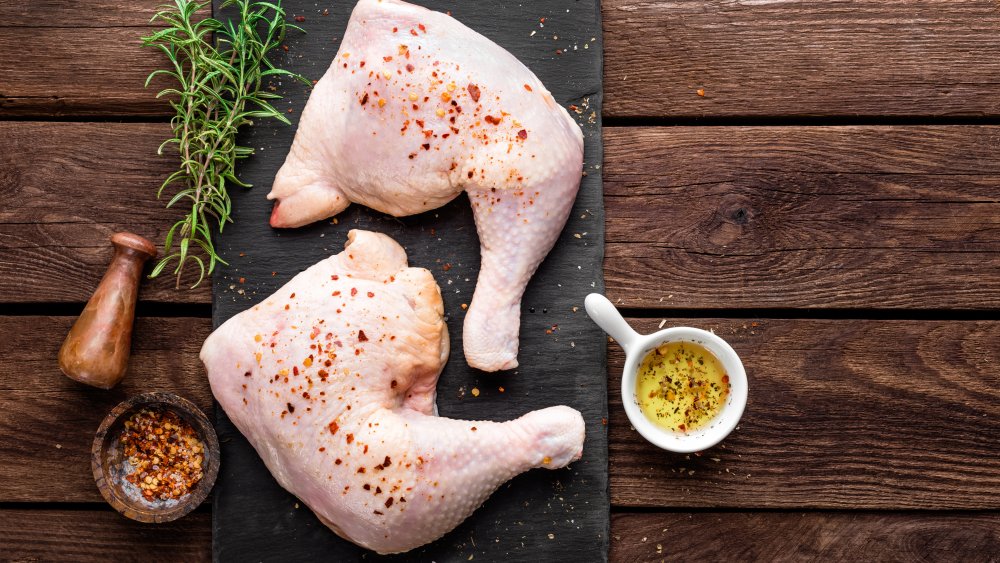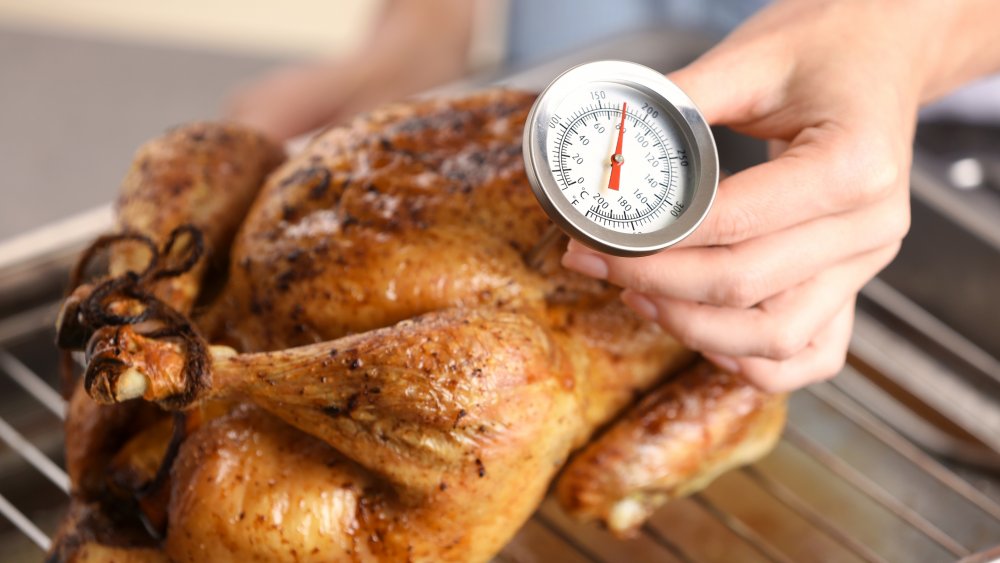What Happens If You Eat Slightly Undercooked Chicken?
Eating a steak that's on the rare side is pretty common, but eating chicken that's slightly undercooked is always going to be a bad idea. If you've ever cut into a piece of chicken that was slightly pink, you may have thought twice about moving forward with the meal, but there's more to it than color. Nobody wants to get sick because of food poisoning, but it can also be tricky to know for sure just how much danger is involved if you happen to find a piece of undercooked chicken on your plate.
Here's what you should know about eating undercooked chicken and how to best avoid those risks that come with eating it.
Eating undercooked chicken can make your life very unpleasant
Chicken is one of the most popular proteins in the world, but it also has certain pathogens in its raw form that can make a person really sick if the chicken isn't properly cooked. Salmonella and campylobacter are the two of the most threatening germs found in the gut of many farm animals, and they're often particularly present in poultry (via Insider). In fact, 66 percent of tested chicken was found to have either salmonella, campylobacter, or both (via Livestrong). This bacteria can easily make a person sick if the chicken is undercooked or other food comes into contact with the raw poultry.
Should a person eat chicken with either of these germs, they're in for a whole round of unpleasant food poisoning that can include everything from vomiting to fever, headaches, cramps, and diarrhea. These symptoms can sometimes take a day or two to set in, but will pretty much ruin your life when they do. Eating undercooked chicken can be especially dangerous for people with weakened immune systems, and one particular strain of salmonella can even bring on typhoid fever (via Healthline).
So how can you avoid these horrid symptoms that will make you feel like you're dying?
It's all about the chicken's internal temperature
We often assume that as long as chicken is no longer pink in the middle that it's safe to eat and free from salmonella and campylobacter, but this isn't necessarily the case. According to the CDC, the best way to ensure you're eating safe chicken is to check it with a meat thermometer. All parts of the chicken should have an internal temperature of at least 165°F, as this temperature will kill any lingering bacteria.
If you think your chicken may be a little undercooked, don't hesitate to throw it back on the grill or send it back to the kitchen if you're at a restaurant. Delaying your meal for a few more minutes is going to be way better than getting sick because you decided to risk it.


